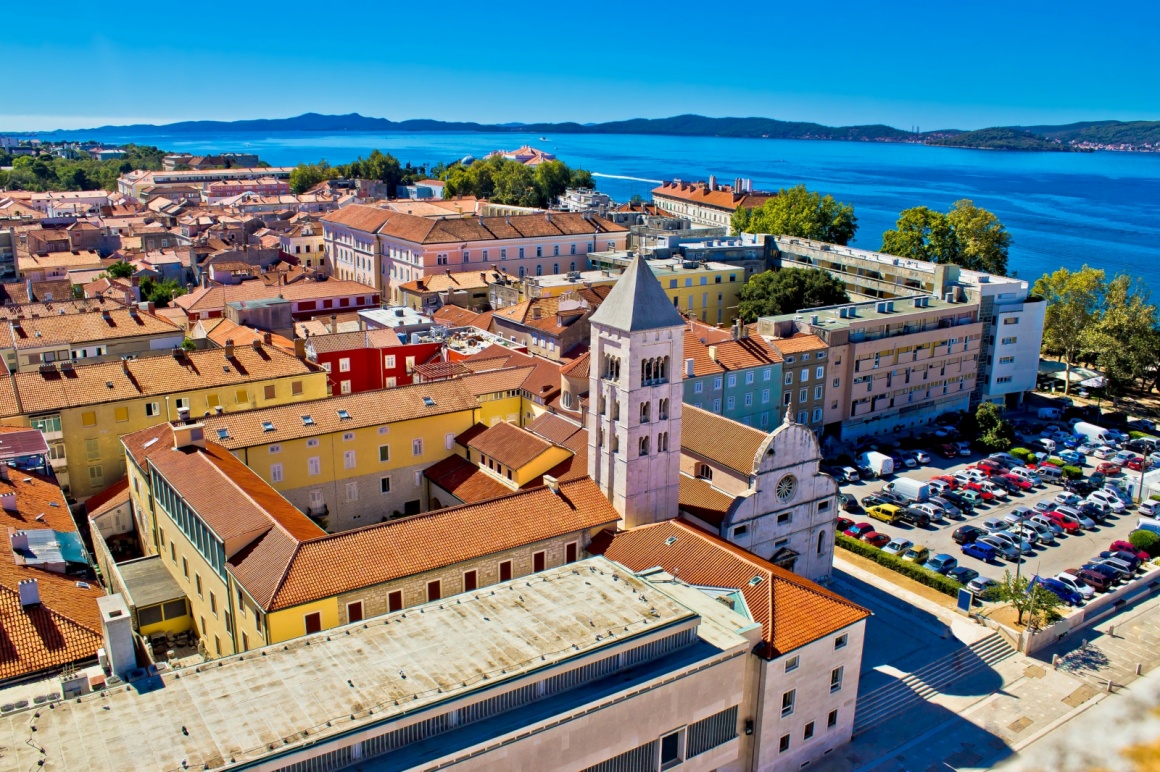As a center of its region and a former capital of Dalmatia, Zadar has immensely rich cultural and historical heritage. Traces of 3000 years long history, various civilizations and their influences are visible on every step through the romantic city streets.
Zadar Old City Center
The majority of historical monuments and interesting sights are accumulated at the old city center, situated on an elongated peninsula. It is surrounded by the well preserved remains of the impressive medieval city walls. Those centuries old ramparts have numerous gates and forts; perhaps the most beautiful to see is the medieval Captain’s Tower and the nearby Land Gate built during the Venetian rule and designed to resemble the triumphal arch with three entrances. Those gates exit to the charming little port, Fosa. A beautiful Park of Queen Jelena Madijevka overlooks Fosa port, as part of the city’s green belt along with Vladimir Nazor Park and the Jarula park.
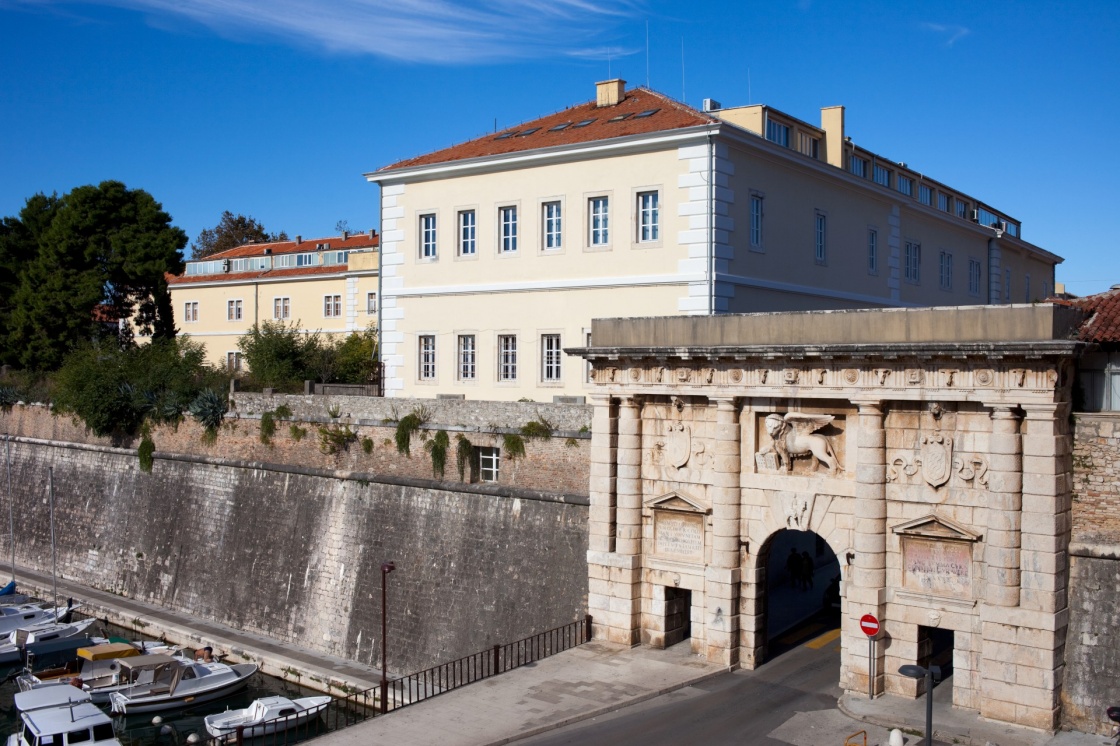
 'The Land Gate to the Old City of Zadar, Croatia, erected in 1543, Renaissance style with the Venetian winged lion over its arch.' - Artur Bogacki / Shutterstock
'The Land Gate to the Old City of Zadar, Croatia, erected in 1543, Renaissance style with the Venetian winged lion over its arch.' - Artur Bogacki / ShutterstockThe Church of St. Donatus
Perhaps the most recognizable sight of Zadar, hidden deep inside the city walls is impressive medieval church of St. Donatus situated near remains of the ancient Roman forum. It is the most popular and best preserved early medieval sacral monument of Byzantine architecture in Croatia.
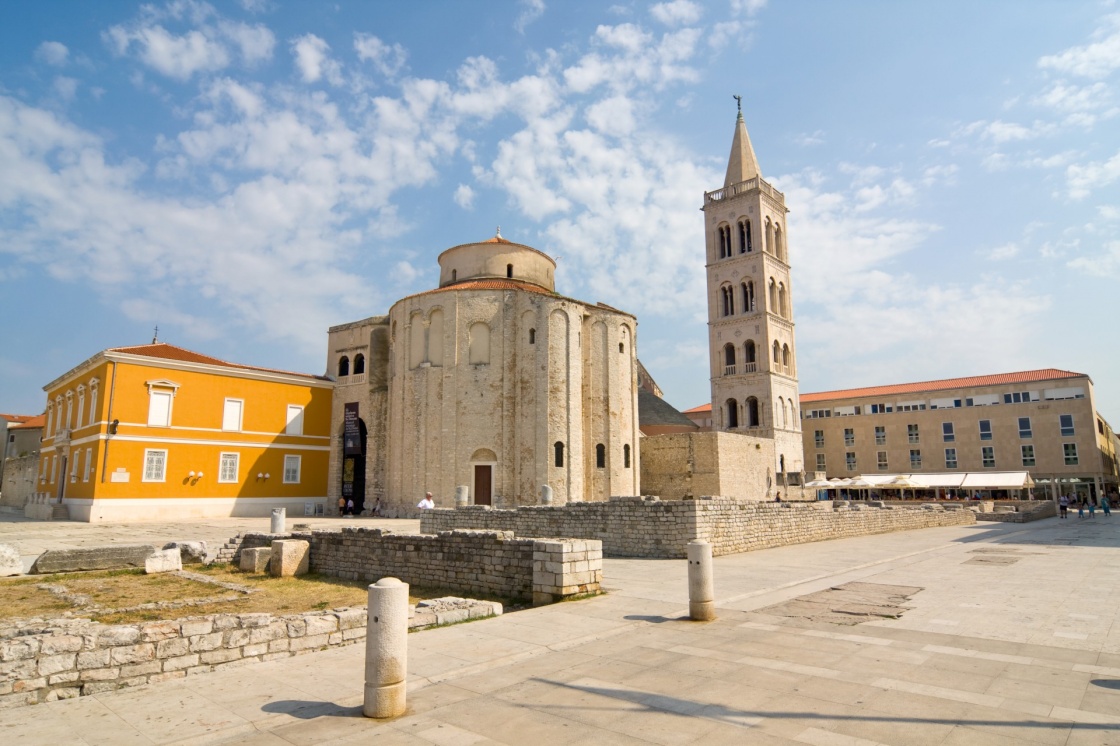
 'Church of st. Donat, a monumental building from the 9th century in Zadar, Croatia' - Dziewul / Shutterstock
'Church of st. Donat, a monumental building from the 9th century in Zadar, Croatia' - Dziewul / ShutterstockImpressive Churches
Saint Anastasia’s Cathedral is the biggest cathedral in Dalmatia, built during the 12th century in Romanesque architectural style but with certain Gothic elements. Zadar is proud of its numerous, well preserved sacral objects; most of them built during the medieval period. Visit the beautiful and impressive three-nave church of St. Mary; St Francis’s Church, the oldest Gothic building in Dalmatia; the remains of the early Christian church of St. Mary Stomorica or the Church of St. Chrysogonus.
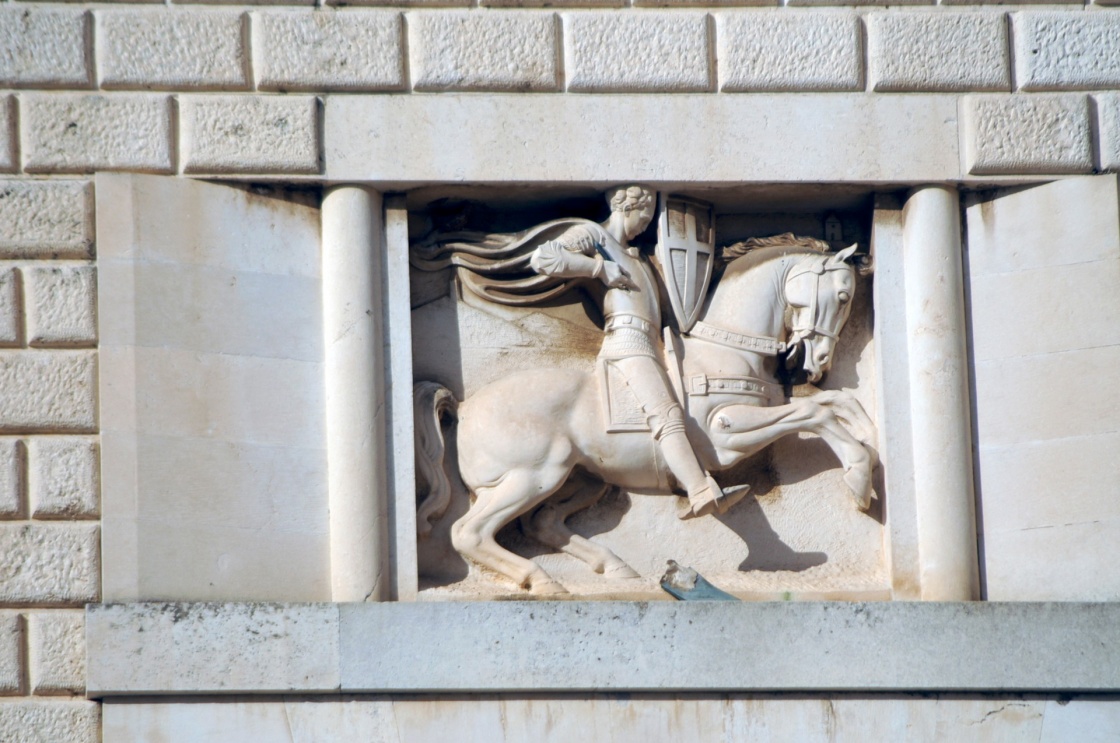
 'Symbol of city's Zadar, Saint Chrysogonus , Croatia' - TANSEL ATASAGUN / Shutterstock
'Symbol of city's Zadar, Saint Chrysogonus , Croatia' - TANSEL ATASAGUN / ShutterstockKalelarga Street
Be sure to take a stroll down the most famous Zadar street, Kalelarga, always crowded with people, numerous shops, restaurants and cafe bars. As you explore the romantic, stone covered, narrow city streets, you will come across numerous palaces (The Rector’s Palace, Nassi, Petrizio and Grisgono-Vovo palaces) from the medieval, renaissance and baroque periods. In those streets practically every stone has its own history. The most popular gathering place, the People’s Square, is always crowded with tourists and street performers. Be sure to explore the beautiful Five Wells Square and the surrounding sights as well.
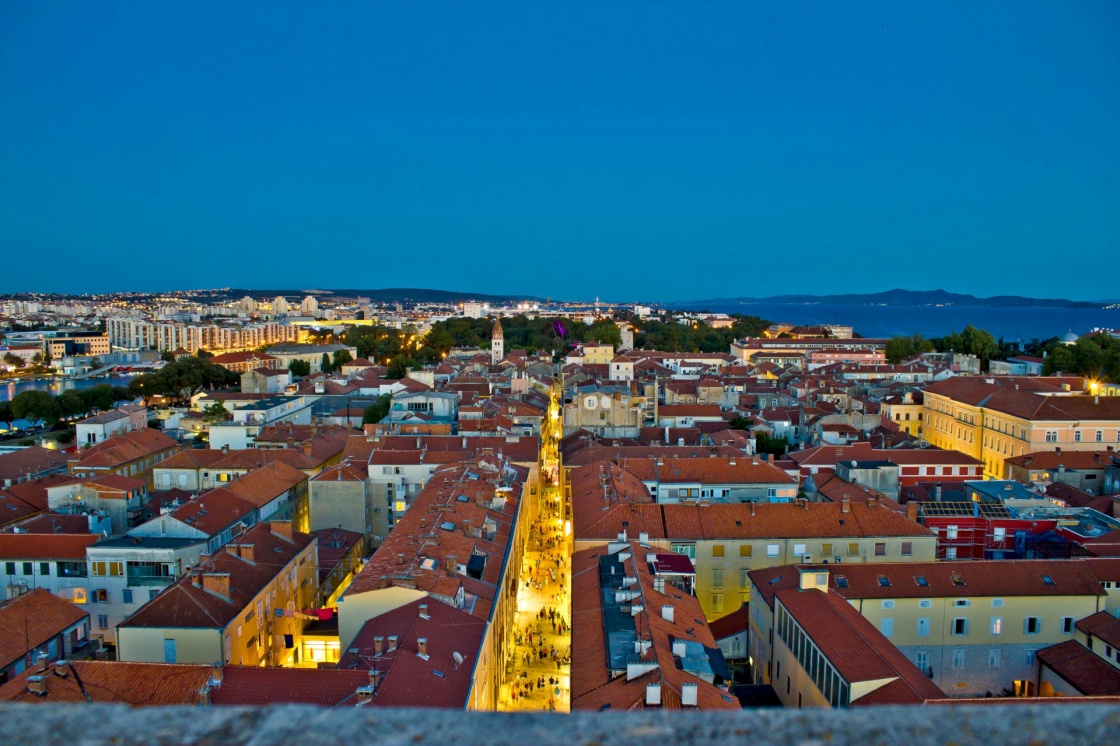
 'Zadar rooftops night aerial view, Dalmatia, Croatia' - xbrchx / Shutterstock
'Zadar rooftops night aerial view, Dalmatia, Croatia' - xbrchx / ShutterstockSea Organ
The most popular modern sight of Zadar is the architectural installation called the Sea Organ. It is situated near the cruiser port on the Zadar waterfront. Designed in the form of 70 meters long monumental stairs descending into the sea, 35 special pipes have been incorporated into the stone to reach the sea tide level. The motions of the sea waves endlessly generate enchanting harmonies of the mystical and never-ending song of nature.
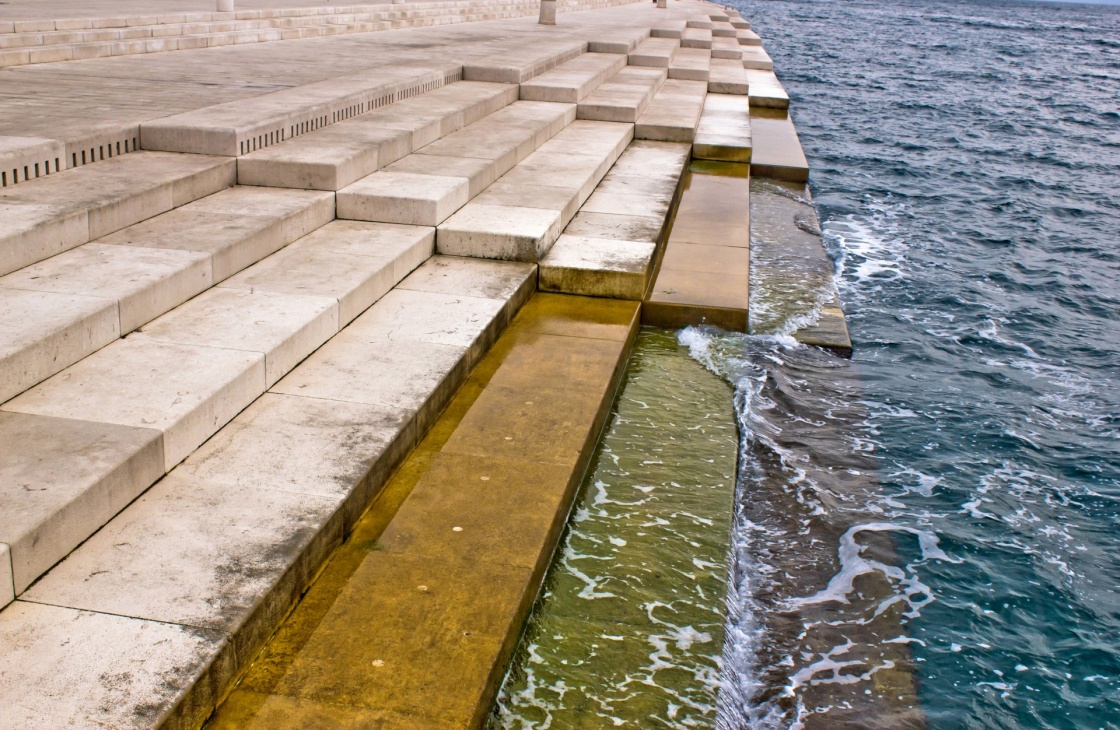
 'Zadar sea organs - musical instrument powered by the underwater sea stream' - xbrchx / Shutterstock
'Zadar sea organs - musical instrument powered by the underwater sea stream' - xbrchx / ShutterstockThe Greeting to the Sun
Another modern-time installation, The Greeting to the Sun, is adjacent to the Sea Organ. It is a model of the solar system with its appertaining planets made of the multi-layered glass conduction plates. After the sunset, this installation receives the impulses from the Sea Organ and generates a spectacular light show.





